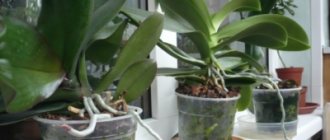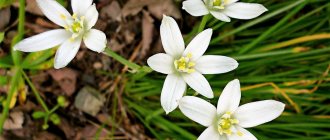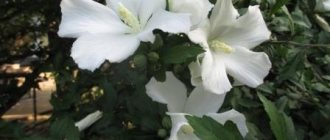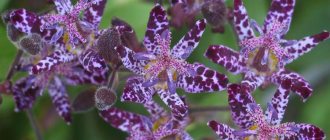Eukomis (eucomius, eucomius, pineapple lily) is the name of one plant belonging to the Asparagus family. It got its name because of its specific appearance - from the Greek language the word eukomius is translated as a beautiful cowlick.
The plant comes from southern Africa, where the temperate climate prevails. The cultivation of eucomius is similar to gladiolus - the herbaceous plant reproduces thanks to the root part, namely the bulb.
Eukomis - description of the plant with photos and videos
The flower is a herbaceous perennial, characterized by many shiny leaves and oval bulbs. Eucomis flower stalks are cylindrical in shape and reach 1 meter in height. The racemose flowers are shaped like a pineapple and reach 30 cm.
The flowers are white or green. Their structure includes 6 stamens and the same number of lobes of lanceolate perianths, which are fused at the base. On the upper part of the flower arrow there are 10-20 bracts that evoke associations with pineapple.
Popular types and varieties
Eucomis includes 14 varieties. The most common varieties of Eucomis include the following:
- Punctata is the most common representative of the genus. It reaches a height of 1.5 m and has many green flowers. The leaves have a linear shape and dotted inclusions.
- Spot redstem (purpureicaulis) – this variety is characterized by spatulate leaves and red stems. The bracts have the same color with green elements.
- Red stem wavy (undulata) - the inflorescences of the plant resemble the pineapple fruit. It is characterized by long, belt-shaped leaves. The inflorescence includes 50 flowers and many green bracts.
- Wavy autumn (autumnalis) is a variety of low pineapple lily and grows up to 30 cm. This plant blooms quite late - closer to autumn. It is characterized by white or cream inflorescences. A characteristic feature of this variety is its ability to tolerate minor frosts.
- Autumn bicolor (bicolor) is one of the most beautiful flowers. The arrow grows up to 1.5 m and is covered with purple spots. The flowers are green in color and have a purple border.
- Bicolor Pole Evans (Pole-evansii) - this variety has light green inflorescences.
- Pole Evans crested (comosa) is considered one of the most popular flowers. It reaches 1 m. In this case, the inflorescences grow up to 30 cm. They can be green, pink or purple.
Eucomis has many advantages:
- excellent decorative properties;
- unusual flower shape;
- ease of care.
The plant also has certain disadvantages. The flower cannot be called frost-resistant, so it has to be dug up for the winter.
Eucomis in landscape design
The culture is valued by gardeners for its long, beautiful flowering and the preservation of decorative qualities after it. With its exotic appearance, the pineapple lily attracts attention anywhere in the garden. When planting eucomis in a container, it is subsequently used as a mobile design element, placed in different places.
Works well as a single composition. A clear shape, structure and bright, long-lasting flowering will look original on a green lawn or a small hill near the house.
Also used in rocky gardens. A representative of the flora can become a bright contrast, setting the tone for the entire composition. It will favorably emphasize the greatness of the stones. Beautiful glossy leaves can be safely combined with any crop.
Undeservedly, Eucomis is rarely planted in flower beds.
Useful articles for gardeners and gardeners
Aphids on roses: how to treat?
How to grow Chinese cabbage at home?
Currant powdery mildew: pathogen
Tuberous begonia: growing from seeds at home
Landing
When planting in the soil, the bulbs are deepened by 25-35 mm. It all depends on their size. In this case, it is important to maintain a distance between bushes of at least 15 cm, and a row spacing of 30-40 cm.
When planting eucomis in pots, you should do the following:
- Choose deep containers. This is significant due to the characteristics of Eucomis roots.
- Treat planting material with a fungicide. This is required to prevent fungal pathologies.
- Place the bulbs in the soil. It is important that the crown remains above the ground surface.
- Leave the container indoors. The plant should be carefully watered along the edge of the pot. This is done so that the soil remains slightly moist. When the bulb grows, the amount of water is slightly increased.
- After germination, the plant directly in the pot should be taken outside and left in a warm place that is reliably protected from the wind.
- At the end of May, when the soil warms up, the plant should be transplanted into open ground.
Pineapple lily: what it hurts and who it’s afraid of
- Most often, eucomis is bothered by rotting bulbs. A gardener will sooner or later encounter this problem due to improper storage or watering of the plant.
- The main enemies of the pineapple lily are aphids, mealybugs, whiteflies and spider mites. Pests are eliminated using insecticides and acaricides.
- If the leaves turn yellow ahead of time and become covered with brown and moldy spots, this indicates the development of a disease of fungal origin. Perhaps the reason was improper care and excessive watering. In this situation, remove the plant from the ground and carefully inspect the bulb and roots. If you find minor areas of damage, trim them, treat the sections with a fungicidal agent and replant the lily in new soil.
- When eucomis does not have enough natural light and is not satisfied with too low an ambient temperature, the plant blooms very reluctantly or does not bloom at all.
Features of care
Regardless of the specifics of planting, at the initial stage the eucomis bulb should be watered rather sparingly. When the flower begins to develop intensively, it should be watered more abundantly. After watering or rainfall, the bed should be loosened. It is important to get rid of weeds.
When the plant fades, the amount of watering is gradually reduced. When the leaves turn yellow, stop watering the bush completely.
To increase the flowering period and make it more abundant, it is necessary to apply fertilizers in a timely manner. It is recommended to do this twice a month using mineral fertilizer. It is advisable to choose a complex drug. However, it should not contain a lot of nitrogen. This substance will harm the eucomis.
It is worth considering that the flower requires frequent transplants - they are performed annually. The plant is not considered frost-resistant. Therefore, the bulbs are dug out of the ground for the winter and stored indoors.
Preparing for winter
After flowering ends, it is worth cutting off the flower arrows. It is recommended to leave the foliage. Thanks to this, the flower will be able to receive nutrients until autumn. With the arrival of autumn, the foliage turns yellow, withers and dies. At this point, the bulbs enter the resting phase.
If the flower is cultivated in the south, which is characterized by relatively warm winters and the air temperature does not fall below 0 degrees, the bulbs can be left in the ground. In this case, it is recommended to cover the bed with spruce branches or fallen leaves.
When growing a flower in an area with severe frosts and insufficient snow, it is worth pulling out their soil and removing the remaining soil. For a certain time they are immersed in a solution of the drug "Maxim". After drying, the bulbs should be wrapped in paper napkins or textile bags. They should be stored in a dry place. It must be fully ventilated.
If there are few bulbs, they are put in the refrigerator - in the vegetable compartment. It is important to consider that it is prohibited to place apples near them. The flower can also be planted in a container with soil. In such a situation, the plant is stored at home, periodically moistening the soil.
Eucomis bulbs
Variety of species
As mentioned above, gardeners use only certain types of Eucomis for cultivation, namely:
- Crested (Eucomis comosa) - this species appeared in the territories of European countries at the end of the 18th century. The average height of the plant is half a meter. It is composed of grooved flat leaves having a lanceolate or linear shape. Their length is about half a meter and their width is only 7 centimeters. The reverse surface is strewn with brown small spots. Raceme inflorescences, located on flowering shoots 3 centimeters long, are collected from hundreds of greenish flowers. The stricate variety, created in the 90s of the 18th century, is of particular interest to gardeners. The leaves on the reverse side are painted with even red strokes with a tint of brown, located lengthwise. Some varieties included in the group of this species, when they bloom, are covered with flowers painted purple or pinkish.
Crested Eucomis: flower photo
- Eucomis bicolor - the birthplace of this species was the southern part of the African continent, and it appeared on the European continent in the 79s of the 19th century. Flowering shoots of Eucomis Bicolor with a purple pattern grow up to half a meter in length. In the second half of August, flowers of a greenish hue with a purple tint along the border bloom.
Eukomis Bicolor (bicolor): plant photo
- Autumn Eucomis (Eucomis autumnalis) - this species is distinguished from others by its high resistance to winter cold, which allows in the south of the country to leave them in the ground in an open area of the garden throughout the winter. Flowering shoots of Eucomis Autumnalis do not exceed 30 centimeters in height. The flowers of Eucomis Autumnalis are white with a creamy tint, collected in racemose inflorescences, they show all their beauty later than all other species.
Eukomis Autumnalis: flower photo
In gardens you can also find varieties of Eucomis Zambesian, Pole-Evans, red-stemmed and wavy, but this occurs much less frequently than those mentioned above.
Reproduction
Eukomis reproduces well from daughter bulbs. It is recommended to separate them after the start of the dormant period. The place from which the babies were cut should be sprinkled with crushed charcoal.
The plant can also be propagated by seed. Planting material should be placed in fertile soil. The procedure is performed immediately after collection. It is worth considering that it will be possible to wait for flowering only after 3 years.
Eucomis seedlings











